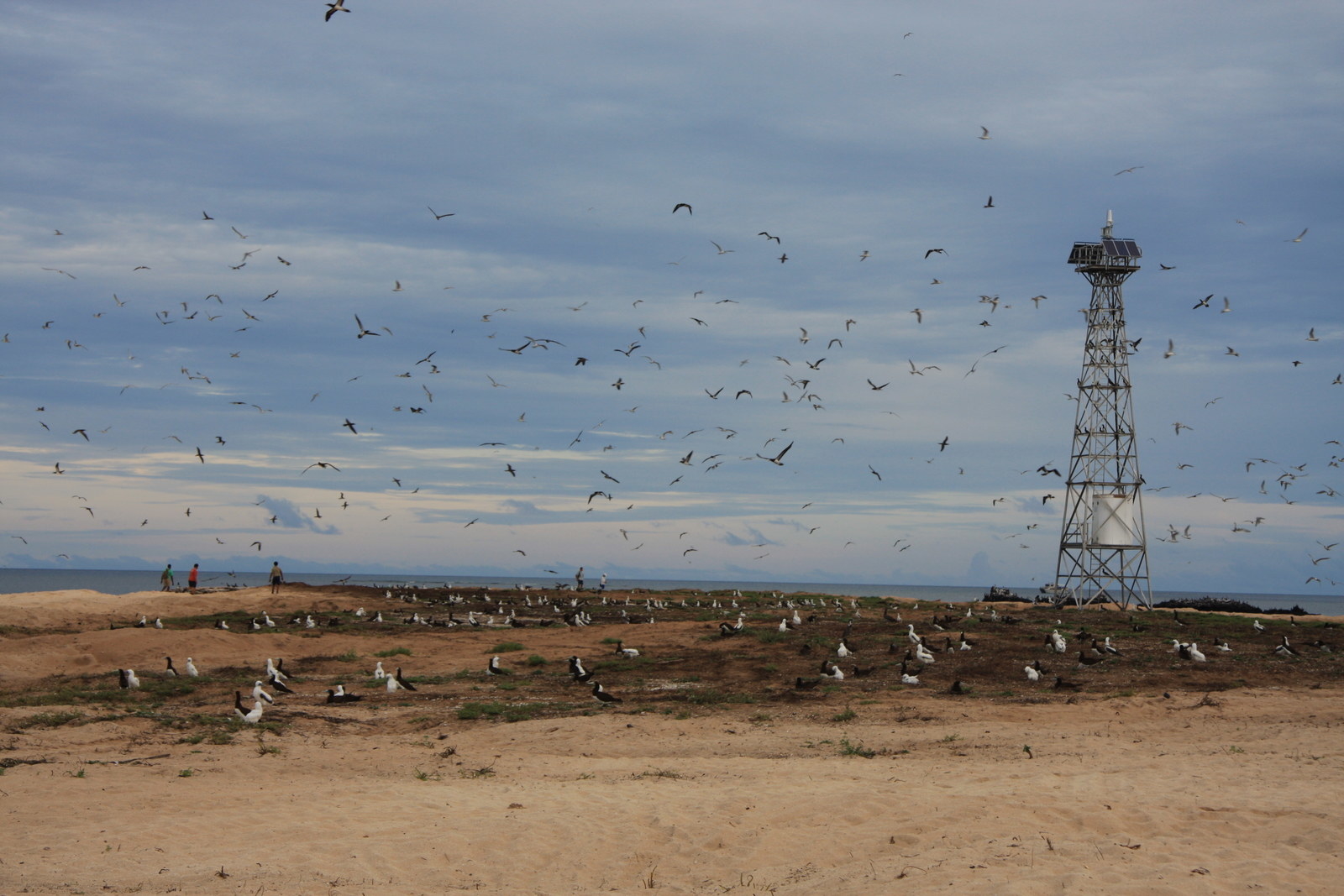
News of the extinction of the Bramble Cay melomys, a small brown rat that survived for decades on a remote island in the Torres Strait, spread fast across the globe after its understated reveal in a government media release on Monday evening.
The melomys’ demise was sandwiched between two pieces of good news: the crest-tailed mulgara was removed from the “vulnerable” category in Australia’s threatened species strategy, and the golden-backed tree-rat was taken off the list altogether.
Not so for the melomys. “Transfer from the endangered category to the extinct category,” its entry said. And that was that.
The melomys lived on Bramble Cay, an island in Australian waters 227km north-east of Cape York Peninsula in Queensland and 50km from the Papua New Guinean coast.
The island is tiny and low-lying, three metres above sea level at high tide. It consists of sand, vegetation, some rock and one manmade structure, a 17m-tall lighthouse.
“You can walk around it in a matter of 10 minutes,” Ian Gynther told BuzzFeed News. “It’s a very remote place, very hard to get to.”
Gynther was one of a team of scientists who embarked on an emergency mission to Bramble Cay in 2014, after a series of dismal warning signs – declining numbers, a diminishing habitat – signalled the melomys might be no more.
They set a total of 900 night traps and 60 camera traps, and scoured the island, checking under pieces of driftwood, shifting logs that had swept up on the shores, and exploring crevices in rocks.
“The first morning we got nothing,” Gynther said. “The second morning, nothing. And so it went on. With each day that passed, we felt worse and worse.
“We had no way of escaping the fact that we were producing evidence the species was no longer there.”

In a 2016 report Gynther concluded the melomys was extinct, and listed the “root cause” as human-induced climate change.
“Significantly, this probably represents the first recorded mammalian extinction due to anthropogenic climate change,” the report stated.
Gynther reasoned that sea levels were rising an average of 3.2mm per year across the globe, but in the Torres Strait the figure was 6mm per year. On top of that, Gynther said, there appeared to have been a “string of cyclonic or severe storm instances” that had contributed to the ecological catastrophe at Bramble Cay. These two things combined to wreak havoc on the melomys.
By the time researchers returned to Bramble Cay in 2014, there had been a “dramatic and rapid decline” in vegetation.
“There was no food there to support [the melomys],” Gynther said. “That was probably one of the major drivers of their decline.”
The diminished plant life, along with sand patterns, and seabird eggs and seagrass washed up into piles, indicated seawater had been washing over the island.
“If there were waves washing over the island that were strong enough to move large logs … certainly that would have had a direct impact on the animals as well. It would have either drowned them or washed them off the island.”
Egon Stewart, a mackerel fisherman who visited the island once a year, is the last known person on earth to have seen the melomys.
In about 2009, he told researchers, he spotted “a heap of sticks and a smashed up dug-out canoe at the north-western end of the island”. When he moved the debris, one or two rats sprinted out from underneath it.
Stewart's grandfather, Al Moller-Nielsen, had fished the area for 30 years. He told researchers about the “unusual flotsam” he had witnessed bobbing in the ocean.
A suspected vessel in distress had turned out to be a floating chunk of land, roughly six metres squared, with a palm tree growing on it.
“Another time,” the report said, “he observed an intact hut adrift at sea on a section of earth.”

Luke Leung, who co-authored the 2016 report, told BuzzFeed News he had applied for a Commonwealth government grant for the melomys around 2010, but it was rejected.
“It’s remote,” he said. “You don’t get publicity that way.”
He said the local Indigenous people, the Erubam Le, had told him they were concerned about the melomys, aware of the species’ existence on the island and also of the wild weather.
“Some Indigenous communities lost their freshwater supply because of storm surges. These people are living with climate change,” he said.
“They know what is happening, when you live on an island only a couple of metres above sea level. When you live in Canberra, it’s completely different.”
A 2008 recovery plan, written when the melomys was classified as endangered, drastically understated what was to come: “Although no specific assessment of this threat has been undertaken, the likely consequences of climate change, including sea-level rise and increase in the frequency and intensity of tropical storms are unlikely to have any major impact on the survival of the Bramble Cay melomys in the life of this plan,” it said.
According to Gynther, the swiftness and severity of the changes to Bramble Cay were “beyond anybody’s expectations” – and the extinction is a warning sign of what is to come.
“We have to be much more aware of potential climate change impacts to threatened species. What this has taught us is that these impacts can happen very rapidly,” he said.
“It’s a bit of a wake up call to us all that the threat of climate change is not something down the track. It’s here and now, it’s happened.”
The melomys was declared extinct by the Queensland state government in 2016. On Monday, it was declared extinct by federal environment minister Melissa Price.
“To do it at a national level is like the ultimate decision,” Tim Beshara, the federal policy director for Wilderness Australia, told BuzzFeed News.
“The earlier notifications from scientists were like hearing that your relative has died. When it’s put in the extinct column in the national environment laws, that’s the funeral notice. That’s when everyone needs to get together, and engage together.”
Buried in this media release from Melissa Price is Australia's official acknowledgement of the extinction of another mammal species - the Bramble Cay Melomys. Australia's first anthropogenic climate change extinction. RIP little mouse. https://t.co/P6NIKqKrYy
Responsibility is currently shared between federal, state and territory governments, the Indigenous Traditional Owners of the land, national park rangers and regional bodies, Beshara says, meaning the buck stops with no-one.
He says the environment minister ultimately has to be accountable.
Price, who has been the minister since Aug. 2018, told BuzzFeed News in a statement it was “incredibly disappointing when any species is formally declared extinct” and acknowledged the storm activity and high water levels were “likely significant contributors”.
“The listing of species is critical in coordinating recovery efforts across all States and Territories and builds on the $425 million the Government has invested in protecting and preserving Australia's most threatened species since coming to office,” Price said.
Beshara felt the way Price announced the extinction was “utter bullshit”. He tweeted that the news of “Australia's first anthropogenic climate change extinction” had been buried, and added “RIP little mouse”. It has been retweeted thousands of times.
“Having this little brown rat going viral is amazing and it’s what we should be doing to mark these moments,” Beshara said.
“The loss of a mammal is a major thing on a global scale. It should be noted. And I’m so glad the world is paying attention.”
